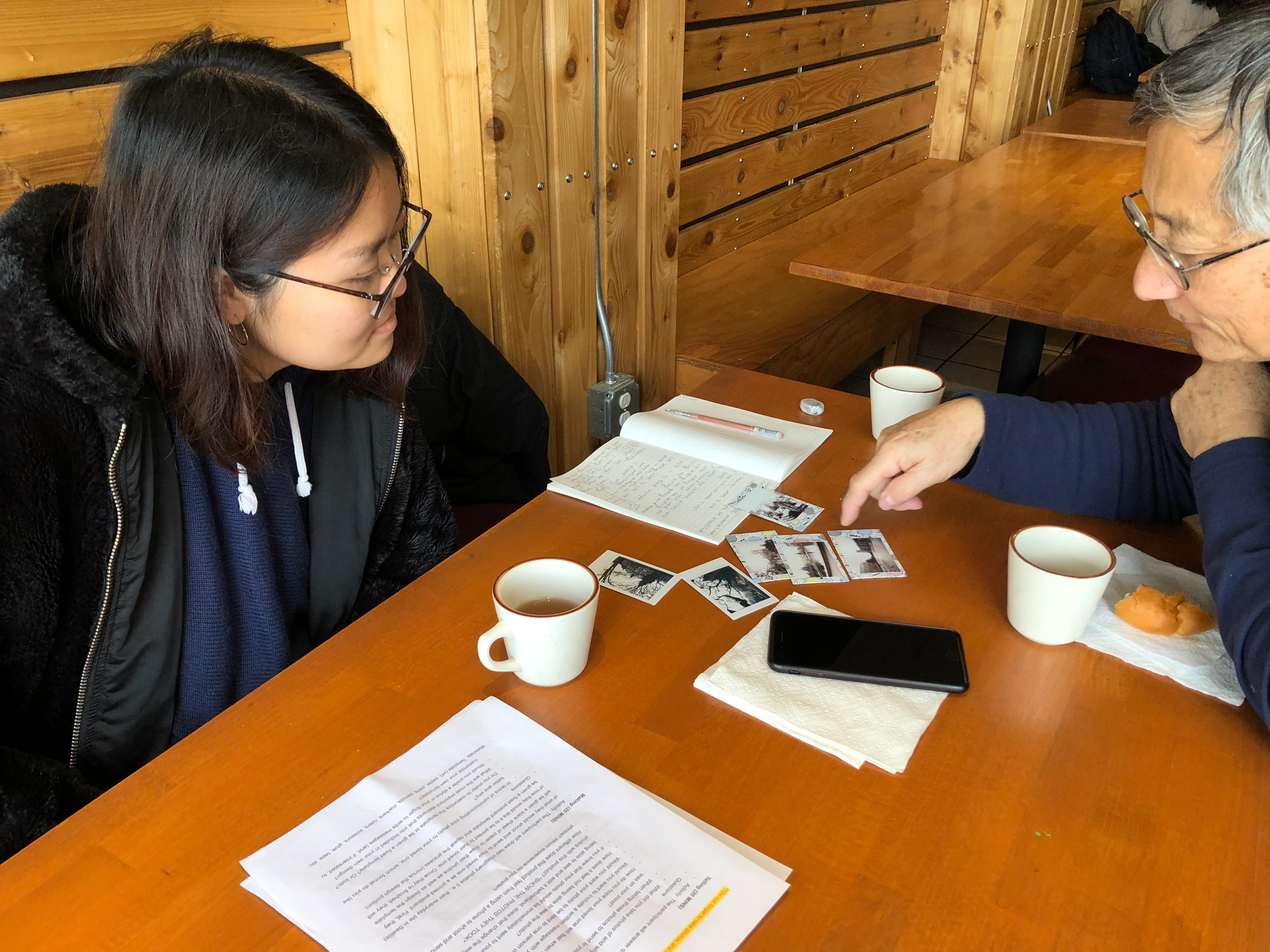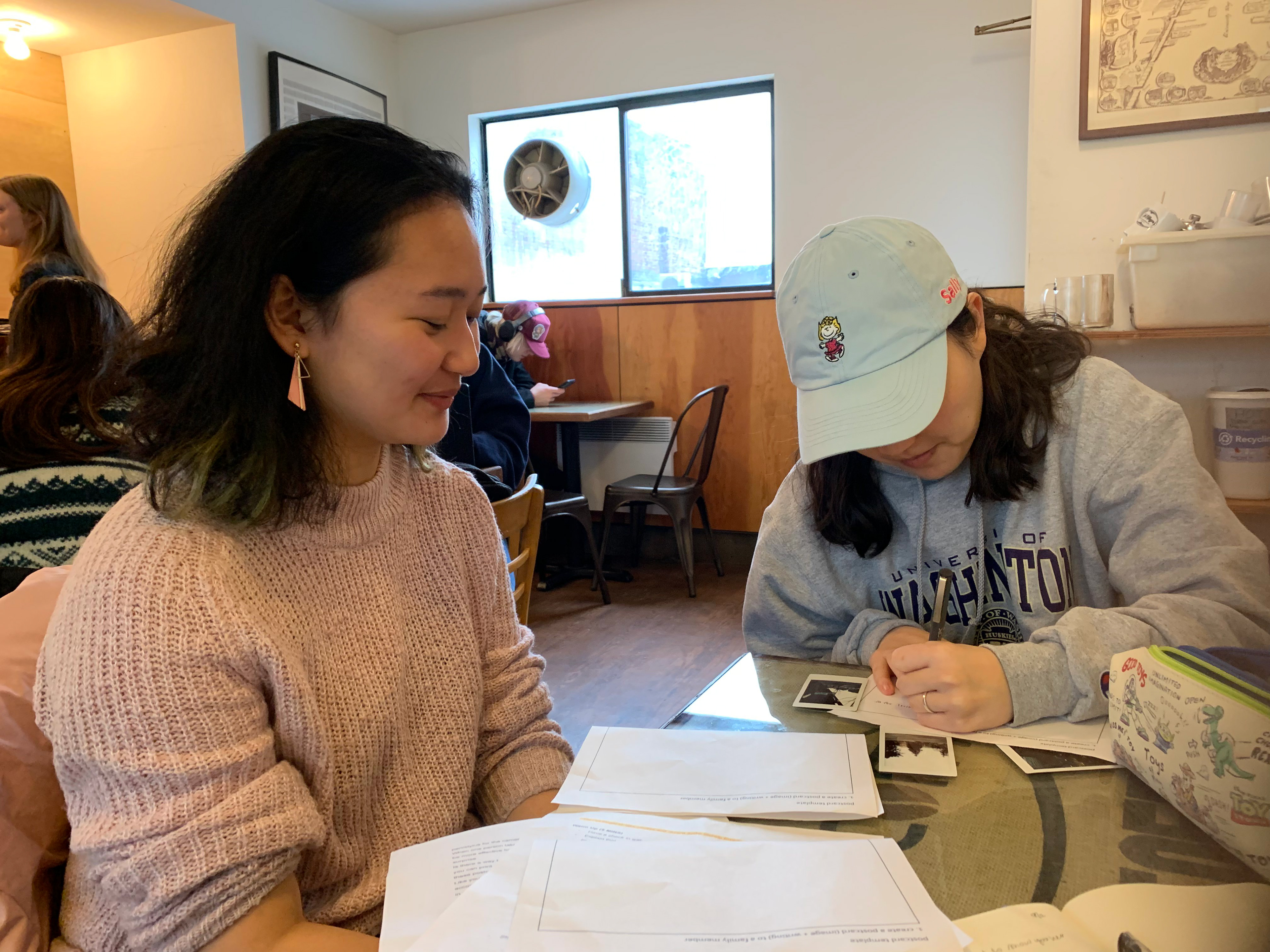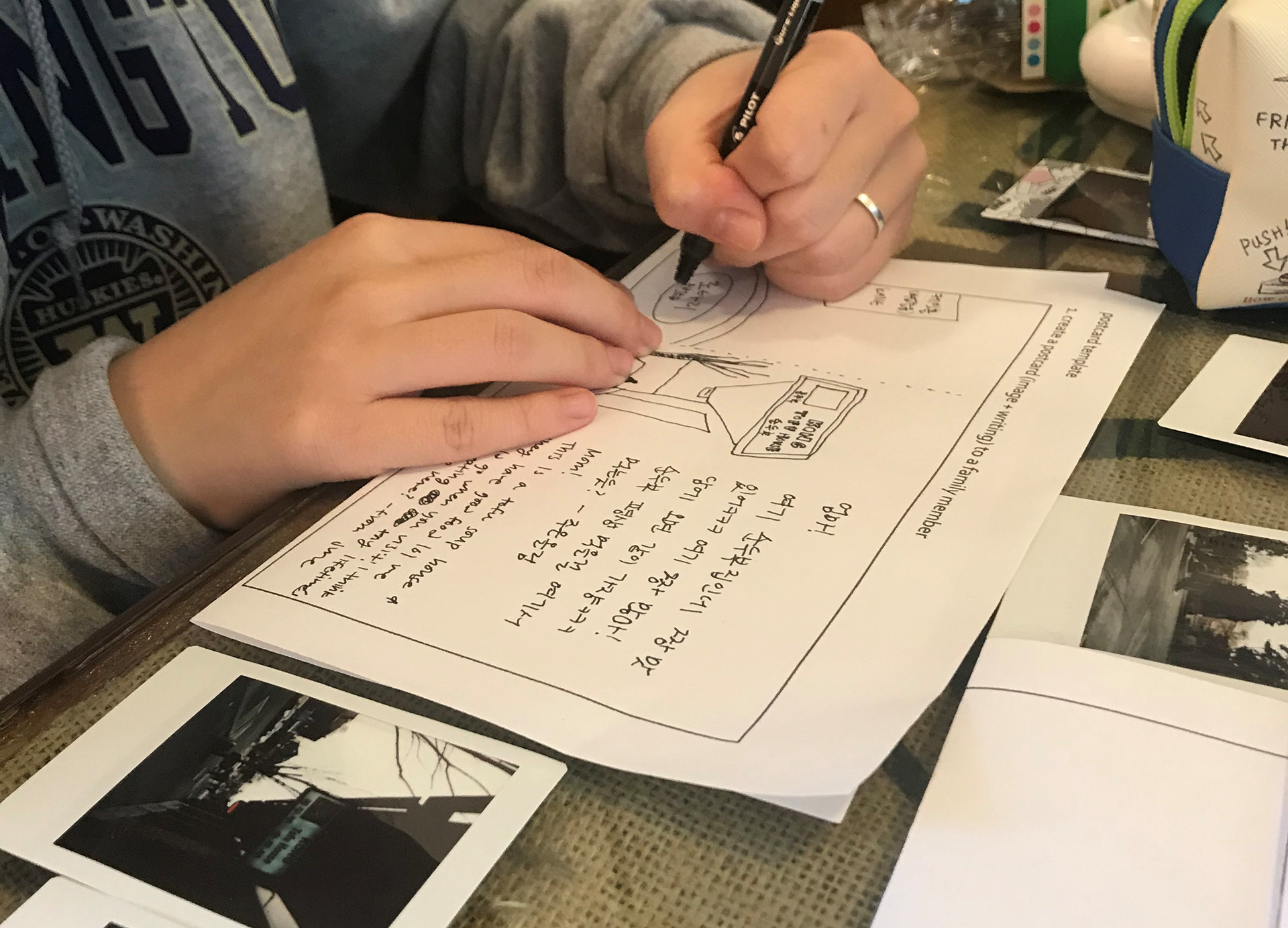Project by Julia Chao, Evita Wijaya, Melissa Takai, and Clara Too.
In an era when photography is ubiquitous and cheap, is there a way to remind each other how unique and precious memories really are?
Re-Collection grants the user the ability to take and send photos to a family member who is living far away. Gradually, the two gather unique collections of photos that print in random order, adding an element of surprise and delight to these treasured relationships.
RESEARCH
We interviewed four participants who are in long-distance familial relationships, and conducted different methods of gathering insights, such as artifact analysis and role-playing. We asked them what they found most painful about being apart, and what they most miss about their loved one. Using the 3 Levels of Why method and many sticky notes, we sorted our insights into categories and discussed for hours about why even close family members seemed to drift apart when separated by long distances. We eventually concluded that although people tended to really treasure these relationships, they often did not feel as much of a need to keep in touch compared to friend or romantic relationships, as there was a deeper sense of security already present in the relationship.
We used an empathy map to gather insights about long-distance family relationships, which we further analyzed using the 3 Levels of Why method.
INSIGHT 1
The senses of sight, sound, and touch are the primary vessels for maintaining intimacy in long-distance relationships.
One participant said that she had a walnut seed from her mother that she kept, and the physicality of it helped comfort her when she felt lonely. Photography was a particularly ubiquitous way for people to keep in touch, and calling was generally preferable to texting, because the sound of a person's voice brings them much closer. Thus, voice became an integral part of the design, adding audio to an otherwise primarily visual experience.
PROCESS STORYBOARD
Storyboard illustrations by Julia Chao
At this point in the process, we were thinking about ways to make the product sustainable, surprising, and intriguing by having the memories disappear once the family members meet again.
The idea of having connected cameras between two people really resonated with our classmates, so we pursued this path in user testing. We handed participants Polaroids, and told them to take pictures and pretend that they would be sent directly to their long distance family member. We also had them draw and write sample postcards of what they would want to send their long distance family member, in order to understand what kinds of information and emotions they would like to communicate.



Most participants seemed to enjoy the process, whereas others commented that the experience didn't seem much different than sending photos from a phone. In order to make the experience more unique and meaningful, we decided that instead of sending the memories directly, it would be stored in the other person's camera and print in a more random order, creating a 'treasure trove' of memories. Users would be more likely to access an older memory, associating a greater sense of nostalgia with the product.
INSIGHT 2
Memories are too precious to lose.
We learned from participants that losing the photographs would disrupt the overall intent of the product, so we decided to keep the memories appear temporarily but stored forever.
We also tried to make the final product more portable for travel convenience, since participants doubted they would carry around a large camera just to communicate with one person. In theory, the picture would be displayed by a flexible LCD film which would roll up into the device.
FINAL STORYBOARD
Our final prototype included a 3D-printed model, the video, and a poster demonstrating our concept. I worked mostly on participant research, sketching and developing the form of the device, and crafting written communication of our concept.
Created for Design 206: Design Methods






